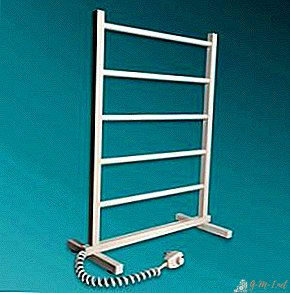A heated towel rail is an indispensable item in every bathroom. It helps to quickly dry the towel, and also maintains the desired temperature in the room. When choosing a device, you need to consider its features. After all, the service life and quality of the device will depend on the purchased model.
Today, there are three main types of device:
- Water.
- Combined.
- Electric.
 They differ in the material of manufacture, size and parameters. A heated towel rail is a curved pipe through which hot water circulates. Due to this, it heats up. Towels and clothes are dried on the device. It perfectly retains heat in the bathroom, making water procedures more comfortable.
They differ in the material of manufacture, size and parameters. A heated towel rail is a curved pipe through which hot water circulates. Due to this, it heats up. Towels and clothes are dried on the device. It perfectly retains heat in the bathroom, making water procedures more comfortable.
The device has several types of heating:
Water
This is the most common type of heating. The battery is heated by circulating hot water in it. Additional taps can be built into the pipe to control the temperature. Typically, water heated towel rails are produced in the form of a snake or ladder. The main advantage of this type is saving money. The disadvantage is that when the central heating is turned off, the pipe will not work.

Electric
In electric models, the battery is heated by a special heater built inside. The device is also available in the form of a snake or ladder. For maintenance, it is more expensive than water. However, in it you can adjust the temperature and use at any time of the year.
Combined
In combined models, two types of heating are connected, electric and water. In this embodiment, two types of circuit, they are independent of each other. In cold seasons, you can use only the water type, and in the summer electric. The main advantage of such a heated towel rail is that it can be used at any time of the year, and it is convenient to operate.
 The batteries for the bathroom are made of several materials. They differ in composition and in response to external factors.
The batteries for the bathroom are made of several materials. They differ in composition and in response to external factors.
Stainless steel
Stainless steel models have their advantages:
- Made of solid pipe.
- Withstand high pressure and temperature changes.
Such pipes are famous for their strength, durability and affordability. Most often in bathrooms you can find just such options for a heated towel rail.
Copper
Copper batteries have good thermal conductivity and corrosion resistance. Copper models heat up quickly and dry towels well. They are light in weight and protected inside with a special coating against direct contact with water.
Brass
In plumbing stores, you can often find brass heated towel rails. Such models are not designed for temperature differences, so they are best installed in private houses, and not in urban apartments. The main advantage of brass pipes is a wide variety of shapes.
The quality of the device will depend on the type of connection.
Towel dryers are connected as follows:
- Bottom connection. Pipes are attached from below. Due to this installation, hot water immediately enters the upper part and provides heating for the entire snake;
- Top. The entrance and exit to the pipe is mounted on top. The disadvantage of this installation is that the lower part of the device will always be less warm, because of this the towel will not evenly dry;
- Diagonal connection. Entrance and exit are located opposite. This allows water to evenly circulate through all pipes;
- Lateral. The most popular type of connection. Here, water circulates from top to bottom, however, the nozzles are located on one side. This option can be installed in any corner or wall of the bathroom.
Each bathroom has its own type of connection. Sometimes the dimensions of the room do not allow to establish a large diagonal model. Therefore, it is worth taking a closer look at the side or bottom connection options.
The type of construction determines where the battery will be installed. Therefore, you also need to consider when choosing heated towel rails.

At the installation site, the device is divided into:
- Wall mounted. One of the most popular models. It occupies a minimum amount of space and is convenient to operate. There are miniature models for small bathtubs.
- Floor standing. In size larger than the wall. Due to the size and installation method, they take up more space in the bathroom.
- Folding. Universal wall models that have a 180-degree turn function. The main disadvantage is that with frequent use of the device, water accumulates in the bend.
- Portable. This option is available only in electric models, since a socket is needed to turn them on. Portable options can be rearranged anywhere for convenience.

Towel dryers - this is an excellent device that allows you to dry the towel in the shortest possible time and maintain a warm atmosphere in the room. They have different types, so before choosing it is recommended to study all models, and choose the most optimal option.


Leave Your Comment